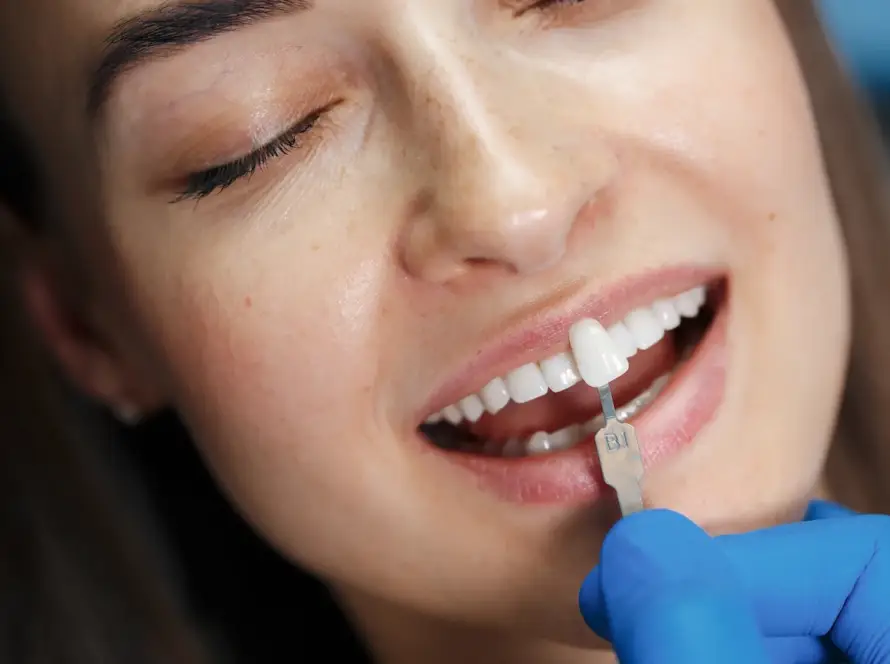Buck Teeth and Their Causes
Buck teeth, medically known as overjet, occur when the upper front teeth protrude noticeably over the lower front teeth. This dental issue arises due to various factors:
- Genetics: Hereditary factors often play a significant role, with the condition commonly running in families.
- Childhood Habits: Prolonged thumb-sucking, pacifier use, or bottle feeding may push teeth out of alignment.
- Jaw Size Discrepancies: Disparities between upper and lower jaw sizes can result in misalignment.
- Tooth Loss: Early loss of primary teeth may lead to misaligned permanent teeth.
- Malpositioned Teeth: Crowded or incorrectly erupting teeth can also contribute to this condition.
Orthodontic Braces: A Traditional Approach
Orthodontic braces remain one of the most reliable methods for correcting buck teeth. Dentists precisely adjust brackets and wires, gradually shifting teeth into proper alignment. Key aspects of orthodontic braces include:
- Material: Typically made of stainless steel, though ceramic options exist.
- Duration: Treatment often spans 18 to 24 months.
- Mechanism: Utilizes constant pressure to reposition teeth.
- Suitability: Effective for children, teens, and adults with varying degrees of misalignment.
- Follow-up: Regular dental check-ups are crucial for adjustments and progress monitoring.
Orthodontic braces are a time-tested solution for achieving a perfect smile.
Invisalign: A Modern Alternative
Invisalign offers a discreet way to correct buck teeth using clear, nearly invisible trays. These trays, known as aligners, are custom-made for each patient.
- Custom Fit: Aligners are tailored to fit each individual’s teeth.
- Removability: Patients can remove them for eating and oral hygiene.
- Comfort: Smooth plastic construction minimizes discomfort.
- Aesthetic: Clear design ensures they are less noticeable.
- Effectiveness: Gradually shifts teeth into the desired position over time.
- Maintenance: Requires regular cleaning to remain clear.
Invisalign represents a contemporary solution tailored to modern lifestyle needs and aesthetic preferences.
Palatal Expanders: Widening the Jaw
Palatal expanders are orthodontic devices designed to widen the upper jaw. These devices apply gentle pressure on the upper molars to expand the palate over time, creating more space in the mouth. This treatment is particularly effective for children and adolescents.
Key benefits include:
- Improved alignment of the teeth.
- Enhanced breathing and reduced nasal congestion.
- Preventing overcrowding of teeth.
Installation involves:
- Placing the device on the upper teeth.
- Regular adjustments by an orthodontist.
- Monitoring progress through routine check-ups.
Side effects may include temporary discomfort and increased salivation. Proper oral hygiene is critical during treatment.
Removal of Baby Teeth: Early Intervention
Early intervention through the removal of baby teeth can prevent or reduce buck teeth. Timing is crucial:
- Consultation: Seek advice from a dental professional.
- Assessment: Conduct a comprehensive evaluation of the child’s dental development.
- Extraction: Extract baby teeth that hinder the growth of permanent teeth.
- Follow-up: Ensure proper monitoring of the emerging permanent teeth.
- Potential Treatments:
- Orthodontic treatments may be recommended post-extraction.
- Space maintainers could be used if necessary.
This early intervention aligns the permanent teeth, aiding in the prevention of alignment issues.
Headgear: Correcting Jaw Alignment
Orthodontic headgear is a specialized device used primarily for correcting jaw alignment. It functions by exerting pressure on the upper jaw, helping to move teeth into better alignment.
- Types of Headgear:
- Cervical Pull Headgear
- High Pull Headgear
- Reverse Pull Headgear
- Process:
- Consultation: Orthodontist assesses dental structure.
- Fitting: Custom-fitted to patient’s mouth.
- Usage: Typically worn for several hours daily.
- Benefits:
- Reduces overjet.
- Prevents overcrowding.
- Improves facial symmetry.
Note: Consistent usage as recommended by the orthodontist is crucial for effectiveness.
Retainers: Maintaining Post-Treatment Results
After orthodontic treatment, retainers are crucial for maintaining the achieved results. Dentists recommend the following:
- Regular Wear: Daily wear is essential to prevent teeth from shifting back to their original position.
- Cleaning: Regular cleaning of retainers is needed to avoid bacteria build-up. Options include gentle brushing and specialized cleaning solutions.
- Check-ups: Routine dental visits ensure that retainers fit well and are functioning correctly.
- Storage: Retainers should be stored in a protective case when not in use to prevent damage or loss.
- Compliance: Adhering to orthodontist instructions guarantees optimal long-term results.
Surgical Options: When Braces Aren’t Enough
Sometimes orthodontic treatment alone cannot correct severe malocclusions, including buck teeth. Surgical options may be considered in these scenarios:
- Orthognathic Surgery: Corrects bone irregularities.
- Aligns jaws properly.
- Enhances facial appearance.
- Tooth Extraction: Removes misaligned teeth.
- Creates space for realignment.
- Helps in severe overcrowding cases.
- Palatal Expanders: Widens the upper jaw.
- Recommended for growing children.
- Facilitates better alignment.
Consultation with an oral surgeon and orthodontist is crucial for determining the best surgical approach based on individual needs.
Lifestyle Changes: Impact of Habits on Dental Health
Lifestyle habits significantly affect dental health and can exacerbate or help improve conditions like buck teeth. Key habits include:
- Diet: A balanced diet rich in calcium and vitamins supports stronger teeth.
- Oral Hygiene: Proper brushing and flossing techniques prevent decay and misalignment.
- Avoiding Harmful Behaviors: Actions like nail-biting or using teeth as tools can lead to dental issues.
- Regular Dental Check-ups: Consistent visits allow for early detection and management of problems.
- Hydration: Drinking water helps wash away food particles and bacteria, reducing the risk of cavities.
Consulting with a Professional: Finding the Right Treatment Plan
A qualified orthodontist can provide specialized care for correcting buck teeth. Key steps include:
- Initial Assessment: Evaluate the severity of the malocclusion.
- Diagnostic Tools: Use X-rays and dental impressions.
- Discussion of Options:
- Braces
- Invisalign
- Surgery
- Tailored Treatment: Develop a personalized plan.
- Progress Monitoring: Regular check-ups to adjust treatment.
- Post-Treatment Care: Retainers and follow-up visits.
Consulting a professional ensures an effective and safe treatment plan tailored to each patient’s specific needs.















